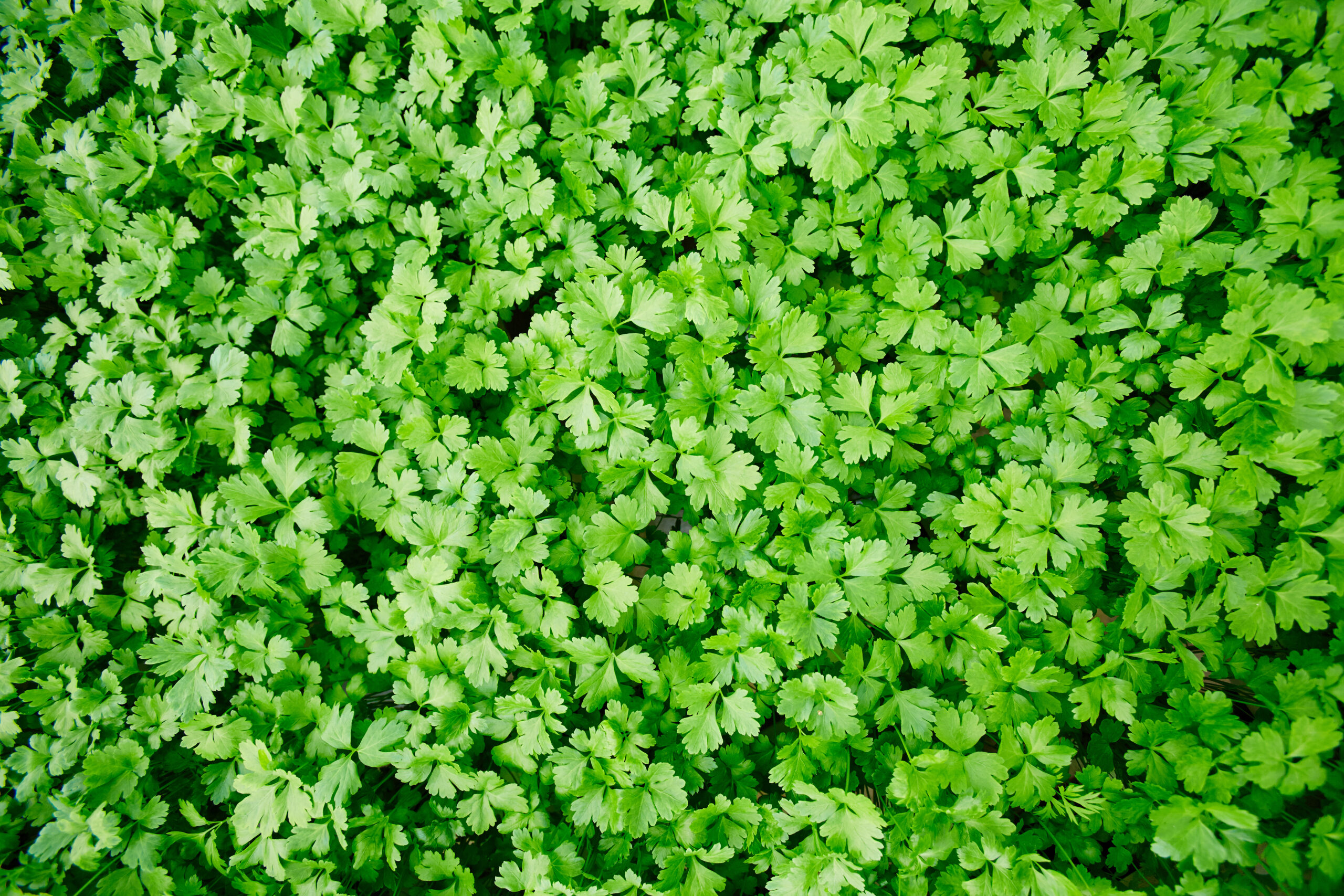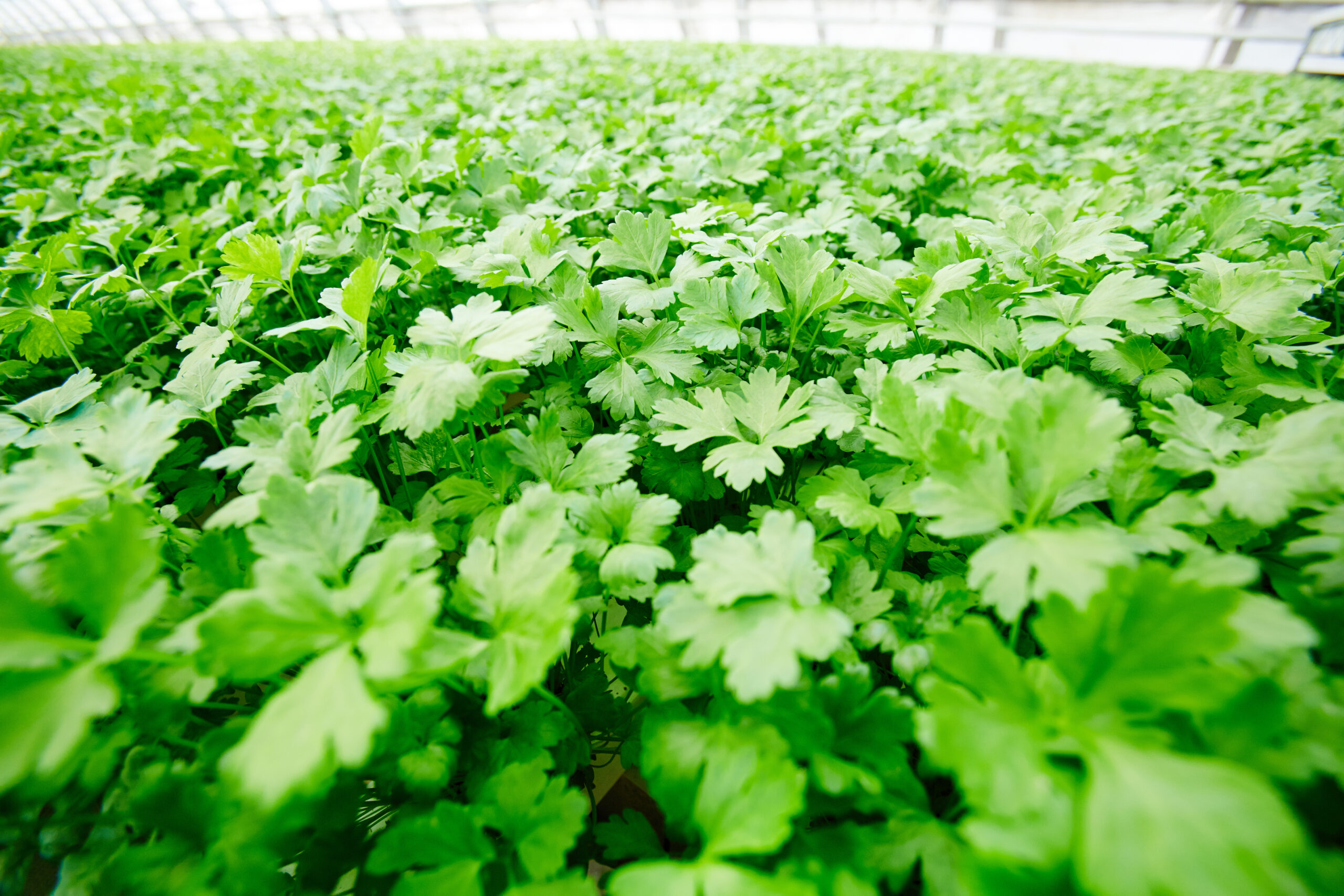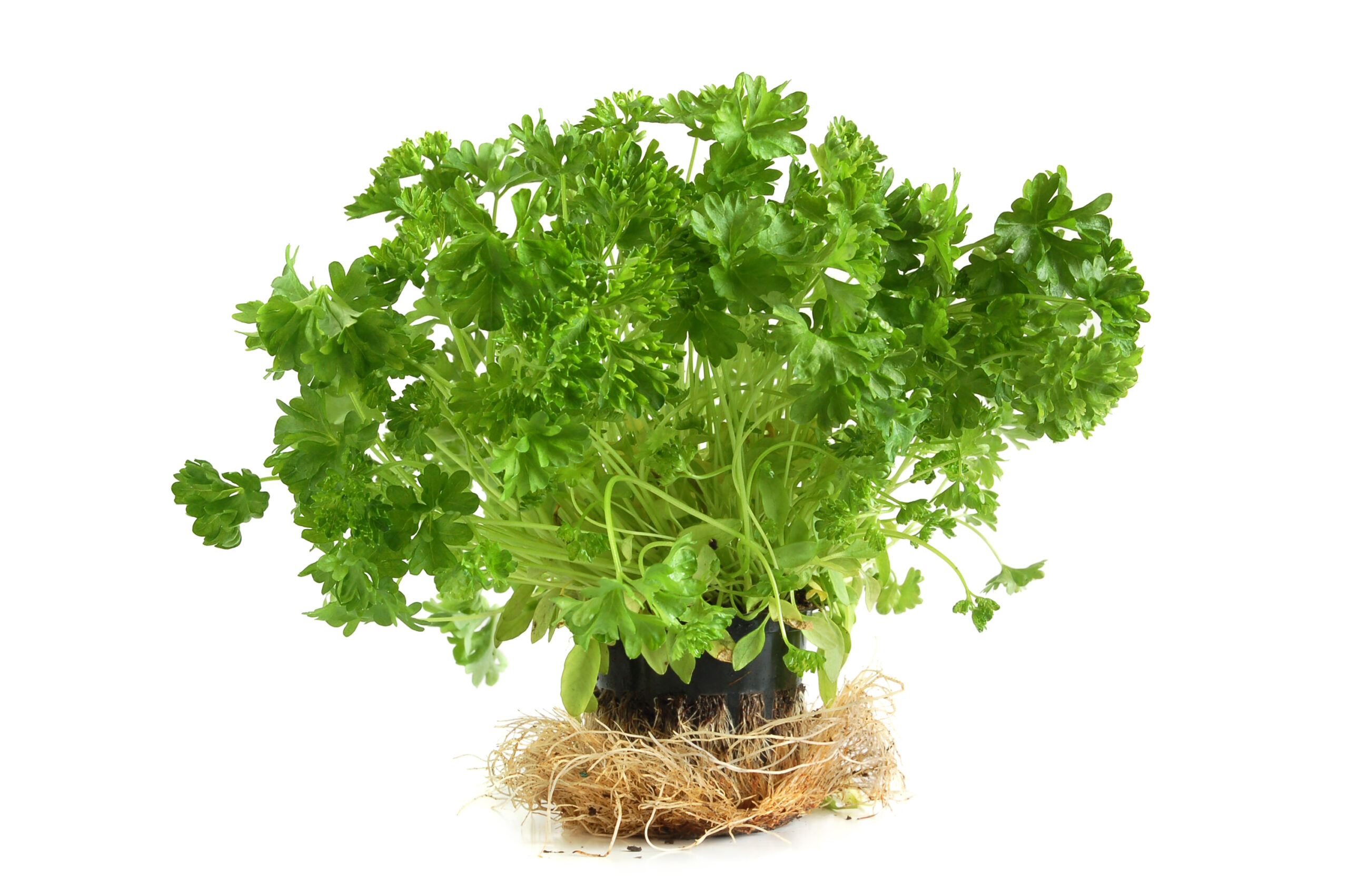Hydroponic parsley farming in a greenhouse is an excellent way to grow fresh, healthy, high-quality herbs year-round, especially in urban areas or locations with limited space. This article will provide a detailed guide to starting a hydroponic parsley farm from scratch, covering the basics of hydroponics, setting up the greenhouse, choosing the right system, and managing the growth process.

Hydroponic Parsley Farming in a Greenhouse
Understanding Hydroponics
Hydroponics uses a water-based fertilizer solution to feed plant roots directly. This allows for precise control over the growing environment and ensures that the plants receive the optimal balance of nutrients for healthy growth. The benefits of hydroponics include faster growth, higher yields, and reduced risk of disease compared to traditional soil-based methods.
Greenhouse Selection and Setup
To successfully grow hydroponic parsley, you must set up a greenhouse to provide a controlled environment. When selecting a greenhouse, consider the following factors:
- Size: Choose a greenhouse that can accommodate your desired number of plants and provide sufficient space for a hydroponic system, lighting, and air circulation.
- Climate control: Invest in a greenhouse with built-in climate control features, such as ventilation systems, heaters, and shading systems, to maintain optimal growing conditions.
- Insulation: Choose a well-insulated greenhouse to minimize heat loss and maintain consistent temperatures.
- Orientation: Position your greenhouse to maximize sunlight exposure and ensure optimal natural light for your parsley plants.
Hydroponic System Selection
Several types of hydroponic systems are suitable for growing parsley, including nutrient film technique (NFT), aeroponics, and deep water culture (DWC). Consider budget, available space, and desired yield when selecting a system.
- Nutrient Film Technique (NFT): This system utilizes a thin film of nutrient solution that continuously flows over the roots of the plants, providing constant access to water, nutrients, and oxygen. NFT is ideal for growing parsley due to its shallow root system and low maintenance requirements.
- Aeroponics: In an aeroponic system, plants are suspended in the air, and their roots are periodically misted with nutrient solution. This system offers excellent oxygenation for the plants, promoting faster growth and higher yields.
- Deep Water Culture (DWC): DWC involves suspending plants in a nutrient-rich water solution with their roots submerged. An air pump provides oxygen to the roots. While this system is generally low-maintenance, it may not be the best option for parsley due to its shallow root system.
Seed Selection and Germination
- In order to break down the hard shell surrounding the seed, soak it in water for a whole day.
- Place the seeds in a germination tray or small container filled with a sterile growing medium, such as coconut coir or perlite.
- Maintain a consistent temperature of 68-75°F (20-24°C) and high humidity to facilitate germination. You can use a seedling heat mat and humidity dome to achieve these conditions.
- Keep the growing medium moist but not saturated until the seeds germinate, typically taking 2-4 weeks.
In case you missed it: Hydroponic Cucumber Farming in a Greenhouse: Key Rules to Start from Scratch

Transplanting Seedlings
Once your parsley seedlings have developed at least two true leaves, they are ready for transplantation into the hydroponic system. Carefully remove the seedlings from the germination tray, taking care not to damage the roots. Gently rinse the roots with water to remove any remaining growing medium. Place each seedling into its designated spot in the hydroponic system, ensuring the roots have access to the nutrient solution.
Nutrient Solution Management
A balanced nutrient solution is crucial for the successful growth of hydroponic parsley. The solution should contain essential macronutrients (nitrogen, phosphorus, and potassium) and micronutrients (calcium, magnesium, and trace elements) in appropriate ratios for optimal growth. Commercial hydroponic nutrient solutions are readily available and formulated specifically for herbs.
Regularly monitor the nutrient solution’s pH and electrical conductivity (EC). Maintain a pH range of 5.8 to 6.5 and an EC range of 1.8 to 2.2 mS/cm for optimal parsley growth. Adjust the pH and EC levels as needed, and replace the nutrient solution every two weeks to prevent nutrient imbalances.
Lighting and Photoperiod
While parsley can tolerate a range of light conditions, providing adequate and consistent lighting will promote healthy growth and high yields. Supplement natural sunlight with artificial lighting, such as LED or fluorescent lights, to ensure your parsley receives at least 12-16 hours of light daily.
Temperature and Humidity Management
Maintain a consistent temperature of 65-75°F (18-24°C) during the day and 55-65°F (13-18°C) at night for optimal parsley growth. Use heaters, fans, or air conditioning units to regulate greenhouse temperatures as needed. Aim for a 40-70% relative humidity level to prevent fungal diseases and encourage healthy growth. Install humidity sensors and use humidifiers or dehumidifiers to maintain optimal humidity levels.
Pest and Disease Management
Hydroponic systems generally have fewer pest and disease issues compared to soil-based systems. However, parsley plants must be monitored for pests and diseases and treated immediately. Implement Integrated Pest Management (IPM) strategies to minimize pest and disease issues, such as introducing beneficial insects, using organic insecticides, and maintaining proper sanitation practices.
Harvesting and Post-Harvest Handling
Parsley is typically ready for harvest 70-90 days after germination. Harvest the outer leaves first, allowing the inner leaves to continue growing. Use clean, sharp scissors to cut the stems about 1-2 inches (2.5-5 cm) above the base, not damaging the remaining plant. Harvest parsley early in the morning or late in the afternoon to maintain optimal flavor and freshness.
Wash the harvested parsley in cold water to remove debris, then gently pat dry with a clean towel. Store the parsley in a plastic bag or container in the refrigerator at 32-36°F (0-2°C) with high humidity for up to two weeks.
In case you missed it: Hydroponic Capsicum/Bell Pepper Farming in a Greenhouse: Key Rules to Start from Scratch

Conclusion
Hydroponic parsley farming in a greenhouse offers numerous advantages, including year-round production, higher yields, and improved plant health. Following the key rules outlined in this article, you can successfully start a hydroponic parsley farm from scratch and enjoy a constant supply of fresh, flavorful herbs.
- Feed Your Flock for Less: Top 10 Tips to Save on Chicken Feed
- Ultimate Guide to Ossabaw Island Hog: Breeding, Raising, Diet, and Care
- Hatching Answers: The Top 10 Reasons Your Chickens Aren’t Laying Eggs
- Eggs and Economics: Breaking Down the Cost of Raising Backyard Chickens
- Defend Your Greens: Proven Methods to Keep Iguanas Out of Your Garden
- Ultimate Guide to Cinnamon Queen Chicken: A Comprehensive Guide for Beginners
- Ultimate Guide to California Tan Chicken: Breeding, Raising, Diet, Egg-Production and Care
- Ultimate Guide to Marsh Daisy Chicken: Breeding, Raising, Diet, and Care
- 10 Types of Chicken Farming Businesses You Can Start for Profits